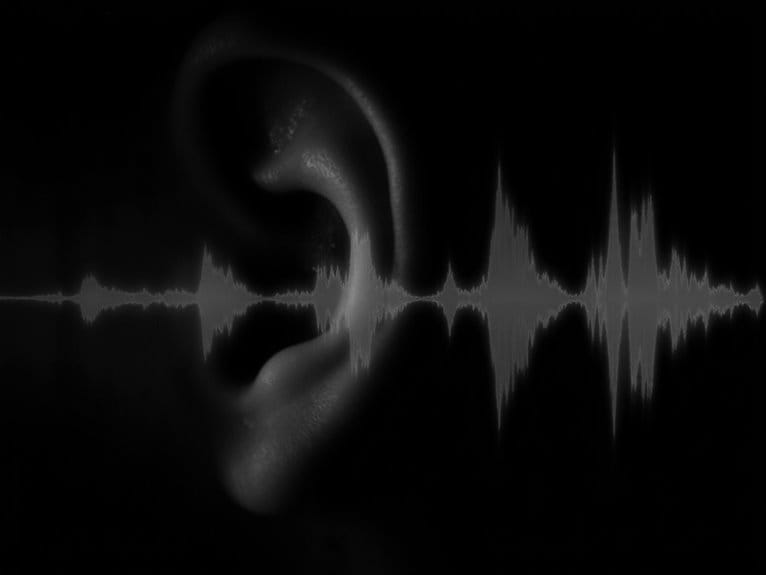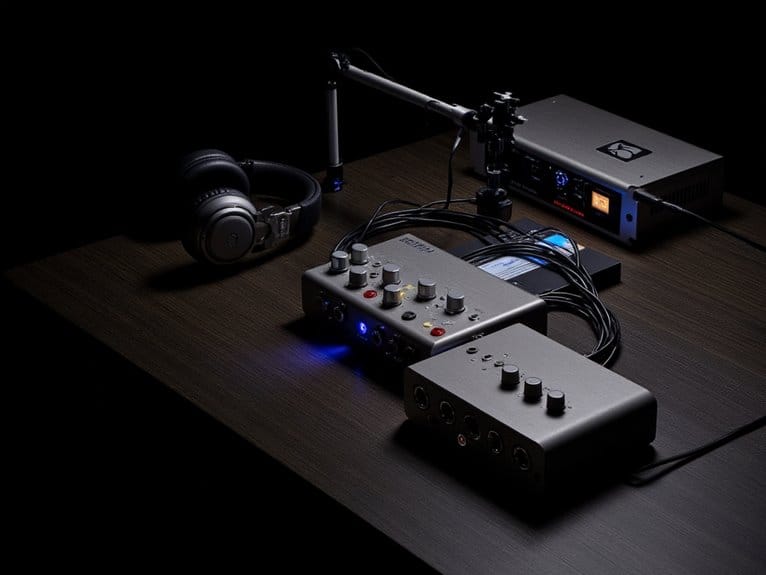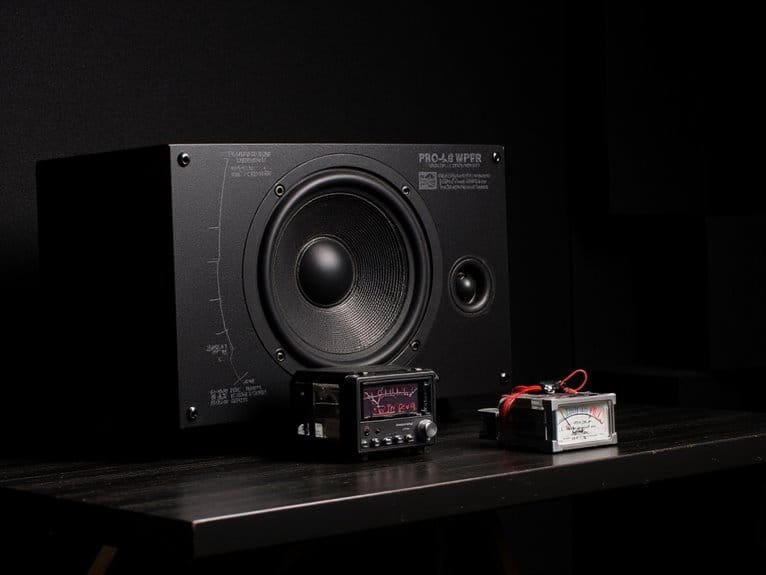The Psychology of Mixing: How Our Ears Deceive Us
Your brain constantly deceives you during mixing through auditory perceptual multistability, where the same sound gets interpreted differently based on your neural architecture’s balance of glutamate and GABA neurotransmitters. Lead vocals automatically capture your attention through evolutionary programming that prioritizes human voices, while auditory stream segregation makes mix elements appear or disappear as your brain reorganizes overlapping sounds into distinct units. Understanding these hardwired deceptions transforms your approach to professional mixing decisions.
We are supported by our audience. When you purchase through links on our site, we may earn an affiliate commission, at no extra cost for you. Learn more.
Notable Insights
- Our brains can interpret the same audio sequence differently due to auditory perceptual multistability, creating inconsistent listening experiences.
- Lead vocals automatically capture attention even when quieter, as our brains prioritize human voice detection over instruments.
- Auditory stream segregation causes mix elements to appear or disappear over time as our ears separate overlapping sounds.
- Mixing engineers exploit spatial illusions using timing and level tricks that make sounds appear in phantom locations.
- The Franssen effect demonstrates how our ears prioritize sound onsets over sustained locations when determining spatial placement.
When Your Brain Plays Tricks: Perceptual Multistability in Audio
When I first discovered that my brain could hear the same sound in completely different ways, I’ll admit I thought something was wrong with my equipment-but it turns out this phenomenon, called auditory perceptual multistability, is actually a fascinating window into how our neural circuitry processes sound.
Your auditory perception doesn’t just passively receive information; it actively switches between different interpretations of identical tone sequences, creating what researchers call sensory ambiguity.
These perceptual flips happen because of the delicate balance between excitatory glutamate and inhibitory GABA neurotransmitters in your auditory cortex, which determines how your brain organizes incoming sound into meaningful patterns.
What’s remarkable is that your individual switching patterns remain consistent over months, suggesting these perceptual quirks are hardwired into your unique neural architecture.
Modern recording equipment can capture these perceptual variations with remarkable precision, as many budget interfaces now offer 24-bit/192kHz recording quality that preserves even the most subtle audio details your brain processes.
Understanding these perceptual nuances becomes crucial when setting up your home studio, where professional-grade audio interfaces can capture these subtle variations that your brain interprets so differently.
The Attention Magnet: Why Lead Vocals Always Win
After years of mixing tracks and wondering why certain elements seemed to effortlessly float to the surface while others got buried, I’ve discovered that lead vocals possess an almost magnetic quality that consistently draws our auditory attention, even when they’re not the loudest element in a mix.
Your brain’s wiring creates this vocal prominence through evolutionary programming that prioritizes human voice detection, making vocals naturally stand out against instrumental backgrounds through specialized neural pathways and cortical processing.
Your brain’s evolutionary wiring automatically prioritizes human voices, making vocals cut through any mix using specialized neural pathways designed for voice detection.
Here’s why vocals dominate your attention:
- Frequency advantage – Vocals occupy mid-to-high ranges where your ears demonstrate peak sensitivity.
- Cognitive bias – Your auditory system processes vocal sounds faster than instruments, creating immediate recognition.
- Emotional engagement – Voice carries semantic content and emotional auditory cues that instruments simply can’t match.
Separating the Signal From the Noise: Auditory Stream Segregation
While lead vocals grab your attention through evolutionary programming, there’s an even more fundamental process happening beneath the surface that determines what you actually hear in a complex mix. Your brain constantly performs stream separation, using neural mechanisms to organize overlapping sounds into distinct perceptual units.
This process, called auditory stream segregation, relies on frequency adaptation and competition between neural populations to parse acoustic environments into manageable chunks.
What’s fascinating is how your auditory system uses multiple auditory cues-frequency differences, amplitude modulation rates, and temporal patterns-to create perceptual organization. Initially, you’ll perceive everything as one coherent stream, but over several seconds, your brain builds up evidence to separate distinct sources.
This frequency adaptation explains why certain mix elements seem to emerge or disappear as songs progress, fundamentally shaping your listening experience.
Spatial Illusions: How Sound Placement Manipulates Perception
Beyond how your brain sorts individual sounds into separate streams, there’s another layer of perceptual trickery that mixing engineers exploit: your auditory system‘s remarkable vulnerability to spatial illusions.
Your spatial localization relies on tiny timing and level differences between your ears, but these mechanisms can be fooled with surgical precision. The Franssen effect demonstrates how your brain locks onto a sound’s initial location, even when the audio actually moves elsewhere, creating phantom placement that defies physics.
Your brain clings to where sounds begin, creating phantom audio locations that exist nowhere in physical space.
Here’s how mixing engineers manipulate your auditory perception:
- Onset weighting – Your brain prioritizes where sounds begin, not where they continue
- Interaural cue manipulation – Subtle level differences as small as 1 dB redirect perceived location
- Spectral shaping – High-frequency filtering mimics natural ear positioning effects
These spatial illusions work because your auditory system evolved for survival, not studio accuracy.
On a final note
You’ve seen how your brain constantly rewrites reality, prioritizing vocals while relegating instruments to supporting roles, grouping sounds into streams that don’t always match the mix’s intent, and creating spatial illusions that exist only in your head. Understanding these perceptual quirks won’t stop them from happening, but it’ll make you a more intentional mixer, working with your brain’s tendencies rather than against them.







